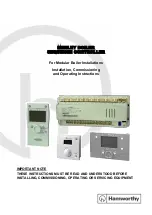
60
Chapter 5
Examples For FPGA
This chapter provides a number of examples of advanced circuits implemented by RTL or Qsys on
the DE1-SoC board. These circuits provide demonstrations of the major features which connected
to FPGA interface on the board, such as audio, SDRAM and IR receiver. All of the associated files
can be found in the
Demonstrations/FPGA
folder on the DE1-SoC System CD.
Installing the Demonstrations
To install the demonstrations on your computer:
Copy the directory
Demonstrations
into a local directory of your choice. It is important to ensure
that the path to your local directory contains no spaces – otherwise, the Nios II software will not
work.
Note Quartus II v13 or later is required for all DE1-SoC demonstrations to support Cyclone V
SoC device.
5
5
.
.
1
1
D
D
E
E
1
1
-
-
S
S
o
o
C
C
F
F
a
a
c
c
t
t
o
o
r
r
y
y
C
C
o
o
n
n
f
f
i
i
g
g
u
u
r
r
a
a
t
t
i
i
o
o
n
n
The DE1-SoC board is shipped from the factory with a default configuration bit-stream that
demonstrates some of the basic features of the board. The setup required for this demonstration, and
the locations of its files are shown below.
Demonstration Setup, File Locations, and Instructions
Project directory: DE1_SoC_Default
Bit stream used: DE1_SoC_Default.sof or DE1_SoC_Default.jic
Power on the DE1-SoC board, with the USB cable connected to the USB Blaster port. If
necessary (that is, if the default factory configuration of the DE1-SoC board is not currently
stored in EPCQ device), download the bit stream to the board by using JTAG programming
You should now be able to observe that the 7-segment displays are displaying a sequence of
characters, and the red LEDs are flashing.
Optionally connect a VGA display to the VGA D-SUB connector. When connected, the VGA
















































